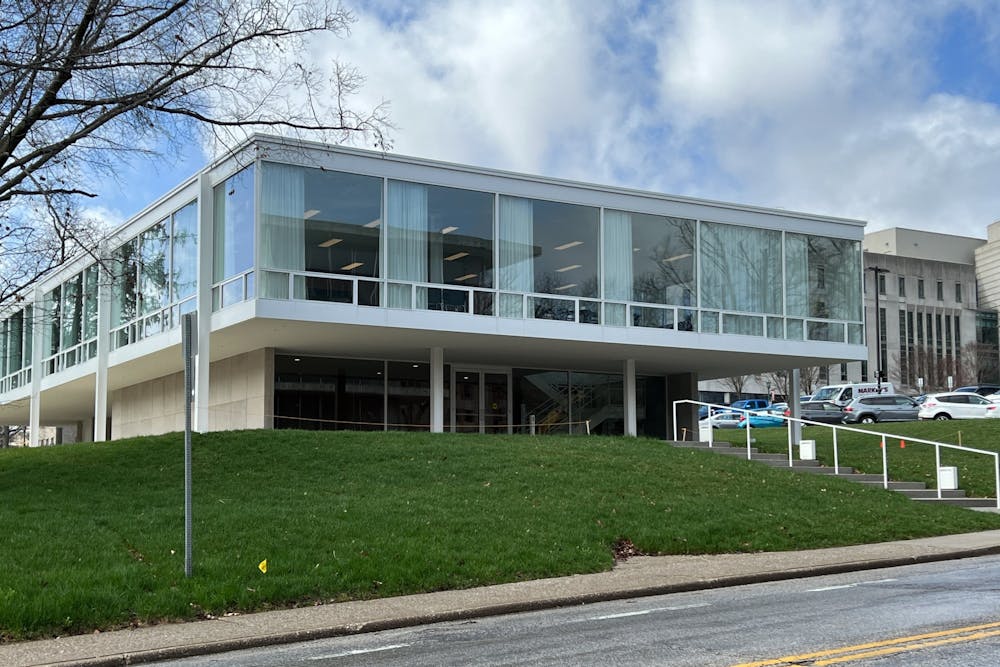The Grunwald Gallery exhibit “Mies in Indiana,” features design and blueprints for Indiana projects from architect Ludwig Mies van der Rohe. The exhibit opened Aug. 26 and will remain open from noon to 4 p.m. Tuesday through Sunday until Nov. 12.
The exhibit is in the Mies building at 321 N. Eagleson Ave., one that Mies originally designed in 1952 to be a fraternity house on campus, according to an IU News article.
According to an article from the Mies van der Rohe Society, Mies was renowned for his work in modernist architecture. He is responsible for iconic buildings such as the Lake Shore Drive Apartments in Chicago and the Seagram building in New York City. Generally known for his career in Chicago, Mies’s expenditures in Indiana are being found years after his death in 1969.
Related: [Local music scene: Oct. 27-31]
Jon Racek, exhibit co-curator and director of the comprehensive design area of the Eskenazi School of Art, Architecture + Design, said the exhibit brings Mies’ architectural plans in Indiana to light, most of which never made it past the blueprint. Mies was asked by a collection of wealthy businessmen, mostly developers, to design several different buildings. The first design was for a bowling alley in Indianapolis while others included office buildings, apartments, summer homes and a drive-in restaurant.
“I think Mies has an international influence; he is one of the most important architects of the twenty-first century,” Racek said. “In terms of IU, the fact that this building was built for the IU campus as a fraternity but now as an academic building, that puts IU on the map in terms of important modernist buildings in the United States.”
Racek said the exhibit can be interesting to all students, whether they are involved in architecture or not.
“I would encourage people to check out this exhibit, it’s a great piece of storytelling,” Racek said. “It is amazing how many things had to happen to get this building standing today.”
Nathan Ramsey, teaching assistant for Racek and IU senior, said Racek and Adam Thies, who the associate vice president of capital planning at IU. looked back through Mies’ history to finish telling the story of his work at IU.
“Racek and Thies were able to go to different libraries, sifting through many floorplans and documents,” Ramsey said. “They ended up finding out that Sydney Eskenazi was in the fraternity that Mies originally designed, together they received items of Mies’ work and pieced the story together.”
Ramsey said in addition to the exhibit, there was a video produced to showcase interesting aspects of the building with background music from a Jacobs School of Music student. The pieces played were Mies’ favorite, and some were played at his funeral.
This exhibit was Grunwald Gallery’s first show dealing with architecture. Grunwald Gallery Director Betsy Stirratt said the exhibit benefited in adding to the gallery’s variety of art modes.
“The exhibit design was very successful; it contained some large-scale prints that are on wallpaper material and those turned out to be very effective,” Stirratt said. “It gave us experience in terms of installing that type of art.”
Related: [COLUMN: cleopatrick’s ‘DOOM’ briefly showcases a renewed and vital sound]
Stirratt said the exhibit features unique pieces that were unexpected for the gallery.
“The addition to the show of two artifacts that I was not expecting to have really enhanced the show,” Stirratt said. “One of those is the set of original blueprints for the building from the 1940s, the other is a watercolor painting by Mies.”
CORRECTION: Jon Racek's title was incorrect in a previous version of this article. Adam Thies' title was also incorrect in a previous version of this article.




